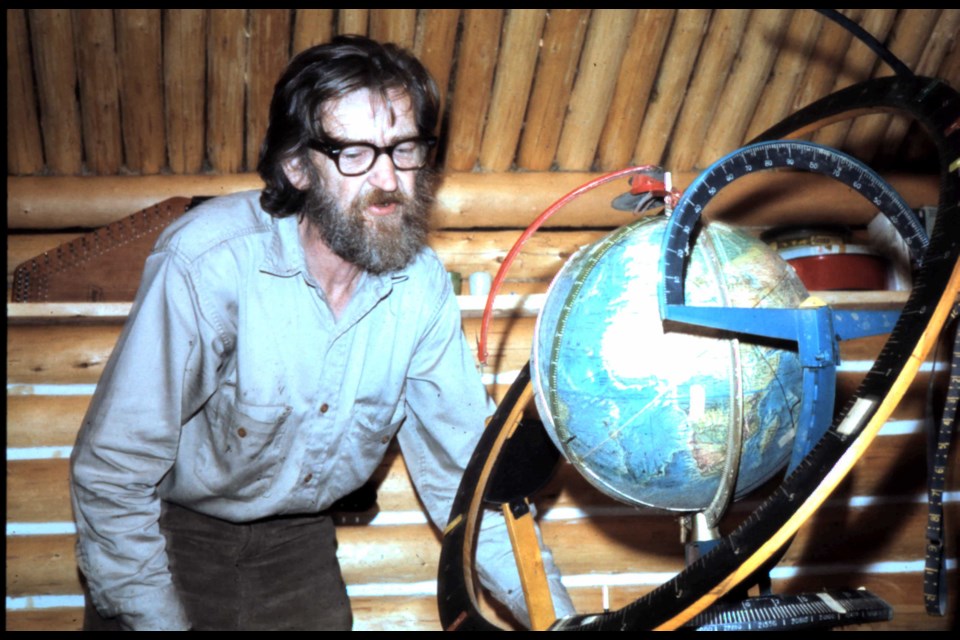THUNDER BAY - It’s been a film at least three years in the making of man whose life has been intriguing people across the region for more than 40 years.
The Thunder Bay Museum recently released In Search of Wendell Beckwith, a documentary film by filmmaker Jim Hyder about the fascinating life of a reclusive man who lived in the Northwestern Ontario wilderness.
“We are really excited about the end product,” said Michael DeJong, curator and archivist with the Thunder Bay Museum. “It has been a labour of love for Jim and his film team to produce this documentary. It feels great to see it come to fruition for sure.”
Hyder began formally working on the film in 2018, but it’s a project with roots dating back to 1972 when he first learned of Wendell Beckwith.
Beckwith has become somewhat of a folklore legend in Northern Ontario. Originally from Connecticut, he pursued an education in science and engineering and was credited as the inventor of the sapphire nip for Parker Brothers Ball Point Pens.
In 1961, after working briefly at the Gravity Institute in New Hampshire,Beckwith met Harry Wirth, a wealthy businessman who wanted to start a wilderness retreat in Northern Ontario. Having already left his wife and children with a trust, Beckwith travelled with Wirth to Armstrong, Ont.
The goal was to find somewhere isolated, with both men described as being reclusive. Eventually they travelled north and built several cabins on Best Island in the middle of Whitewater Lake approximately 40 kilometres north of Armstrong.
“There was a significance as to why he chose where he did and that’s an interesting thing in of itself,” DeJong said.
“He needed somewhere isolated. They eventually found their way to Armstrong and from there they decided to go north, which is only accessibly by canoe and plane. He came to this notion that there was a significance to where he lived. He referred to it as the centre of the universe, so it’s interesting in the way it related to Northwestern Ontario geographically.”
Throughout his time in wilderness, Beckwith pursued his interests in science and engineering. He crafted intricate devices out of wood to make scientific measurements and artistic models and sculptures. The cabins he built were a popular destination for travellers in the area but have since fallen into disrepair.
The Thunder Bay Museum provided many archived materials as well as taped interviews with Beckwith for the film.
“We also have his artifacts that he collected that were created by the local First Nations people, such as the Slipperjack family,” DeJong said. “And also his inventions, which are hard to convey, but they are very ornately designed contraptions that allowed him to measure the stars and the moon.”
And while the documentary is a story about the life of this eccentric and reclusive man, it is also about the people he came in contact with over the years.
“It’s such a fascinating story about this man and his dreams and his scientific pursuits and his ideals of wilderness life,” DeJong said.
“But it’s also about the people, the people who knew him, who lived with him, that supported him going from the First Nations people who helped keep him alive in those first few years, to Harry to help bankroll his adventures, to the canoe trippers who visited him.”
Beckwith remained on Best Island until his death in 1985 at the age of 65. His story shares some similarities to another local legend, Jimmy McQuat, who built White Otter Castle, which has become a popular tourist attraction in the same area.
Though the two stories are not connected, they both represent interesting and important stories in the history of Northwestern Ontario.
“It does seem like an isolated and almost random story,” DeJong said. “But it’s a fascinating story.”
In Search of Wendell Beckwith can be viewed on the Thunder Bay Museum website.
